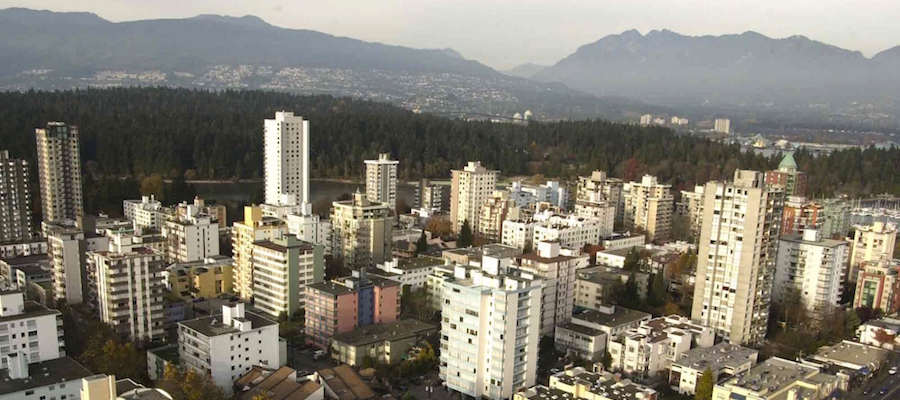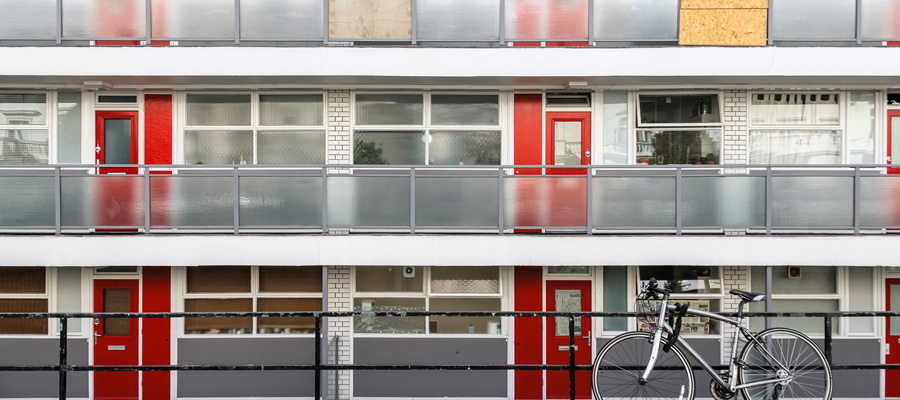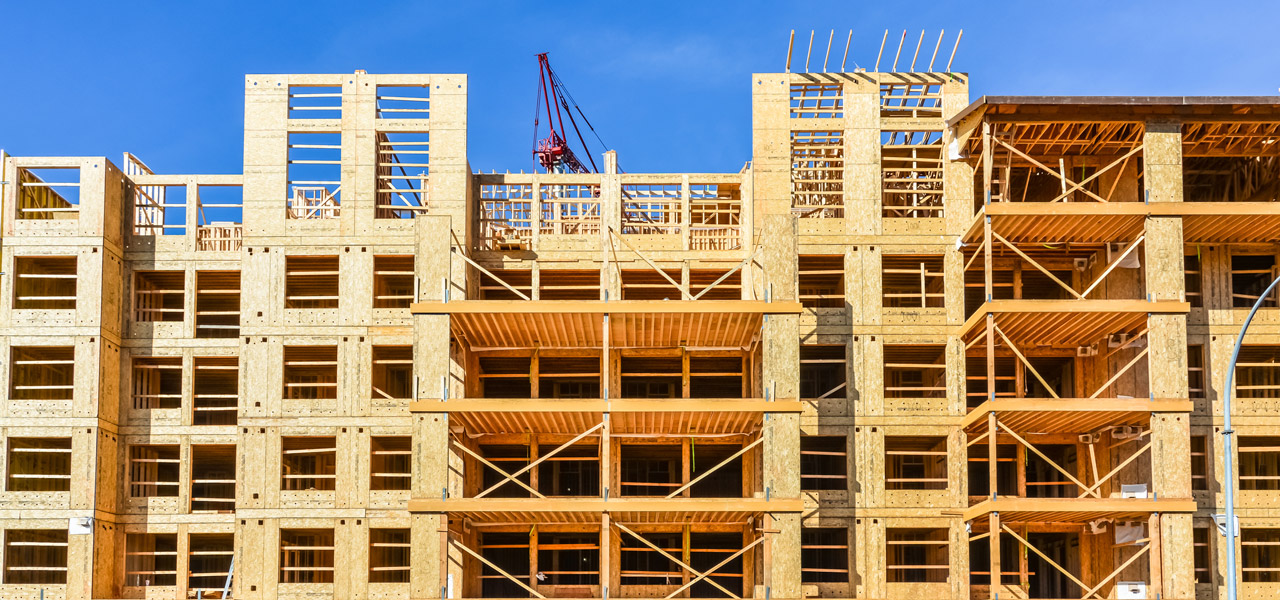Searching for affordable housing in the 2017 BC election platforms

Housing affordability is one of the top issues for voters in the 2017 election campaign, particularly for those in pricey Metro Vancouver. While most of the media attention has been on the jaw-dropping prices of residential real estate, a tight rental market has fuelled rising rents and renovictions, and the most recent count uncovered a 30% increase in Metro Vancouver’s homeless population since 2014.
In this post, we’ll tour the housing affordability plans put forward by the Liberals, New Democrats and Greens. All parties have rhetorically championed affordable housing, and a race to the top on this issue is most welcome. But taking effective action requires substantial political will to marshal resources and overcome vested interests in the housing market.
The Liberal platform largely consists of listing actions the incumbent BC government has already taken, many of which were announced over the past year (after many years of denying there was a problem). The NDP and Greens have both tabled platforms that contain a plethora of measures on housing, in many cases including cost or revenue estimates (which I have not independently verified). Note: many of the policies tabled in the Green platform are similar to ones that I discuss in my May 2016 report, Getting Serious about Affordable Housing, but as a non-partisan researcher I am not trying to take sides.
Cooling the market
To address the housing crisis we must stop treating housing primarily as an investment rather than as a place to live. A huge spotlight has been pointed at external capital—predominantly but not exclusively from Mainland China—flowing into real estate as one important cause of escalating prices. While these concerns were initially dismissed by the real estate industry and BC government, the publication of data on foreign purchasers (as of June 2016) showed foreign purchases to be substantial.
A huge spotlight has been pointed at external capital flowing into real estate as one important cause of escalating prices.
This led to the surprise announcement in late July 2016 of a new 15% foreign buyers tax in Metro Vancouver. In the aftermath, it appears that the tax has indeed slowed, but not eliminated, foreign purchases, while the total volume of sales has dropped by one-third compared to a year earlier. Prices, however, have merely stabilized and thus remain unaffordable. Still, an appropriate contrast is Toronto, Canada’s other booming housing market, where home prices continued to experience double-digit increases (leading the Ontario government last week to announce its own 15% “non-resident speculation” tax).
Both the NDP and Greens would expand on the foreign buyers tax. The Greens would apply the foreign buyers tax to all of BC, not just Metro Vancouver, and raise the rate from 15% to 30%. They would also make the property transfer tax more progressive: lowering it for sales under $1 million; raising it on more expensive sales by adding new brackets. A top rate of 12% would apply to the value of property sold in excess of $3 million, which is similar to the United Kingdom (the current top BC rate is 3%).
The NDP would add a province-wide “empty housing speculation tax”—the platform does not get into details but the tax was proposed in a private member’s bill by John Horgan in Spring 2016. It is an annual property surtax of 2% of assessed value, but with deductions for income tax paid and rental income received so that only empty properties owned by non-residents would end up bearing the tax. The tax would also exempt any homeowner who has lived continuously on their property for more than five years, and residents over age 55. The NDP estimate this new tax would raise $200 million per year, all of which would go into a “housing affordability fund.”
The Greens argue for a similar property tax mechanism aimed at empty homes owned by non-residents, but would make the rate structure progressive. Finally, the Greens would tax capital gains from sales of principal residences (currently untaxed income in Canada) held for less than five years, and with a lifetime capital gains exemption of $750,000. This makes it essentially the same as the Greens proposal for a speculation property transfer tax, for which the platform does not elaborate.
Building new supply
In addition to cooling demand, we need to build new, dedicated affordable housing stock—lots of it and mostly purpose-built rental. Based on a growing population, and the current backlog of rental housing stock, I estimated that between 5,000 and 10,000 new units were needed (in Metro Vancouver only) each year.
In addition to cooling demand, we need to build new, dedicated affordable housing stock—lots of it and mostly purpose-built rental.
The Green and NDP platforms commit to annually building new affordable rental units, and would contribute public land. The Greens would add 4,000 new units per year, at a cost of $750 million. The Greens would also invest another $100 million per year to retrofit older homes for energy efficiency.
The NDP has the most ambitious building program, with a promise of 11,400 new “rental, non-profit, co-op and owner-purchase” units per year for the next decade, ranging from supported social housing to market rental. They aspire to build these units with wood as a boost to BC’s sustainable forest industry.
Helping hands
Housing is far from a free market. All kinds of government intervention and subsidies take place, and the vast majority of those benefits already go to homeowners.
The Home Owner Grant is unlike any other transfer in Canada—it essentially amounts to paying people with their own money.
The 2017 BC Budget also increased the threshold for the Home Owner Grant to $1.6 million, up from $1.2 million, meaning households living in their own homes with assessed values under this amount get a $570 credit. For seniors, there is an additional grant amount, making the total $845. The Home Owner Grant is unlike any other transfer in Canada—it essentially amounts to paying people with their own money. It was originally created by the SoCred government in 1957 for political purposes, and costs the Treasury more than $800 million annually.
The NDP would establish a new parallel credit for renters, valued at $400 a year per eligible household, at an annual cost of over $200 million. The platform does not explicitly make this link but this is the same as the estimated revenue from the “empty housing speculation tax” noted above, so you can think of the combined effect as a transfer of income from non-resident owners to local renters. While renters have, on average, much lower incomes and wealth compared to homeowners, Premier Clark bizarrely tried to paint this policy as benefitting the “very rich.” Interestingly, this would revive a similar credit that was killed by the NDP government way back in 1993.
The Greens would take a different approach, transitioning the Home Owner Grant “to be income-based, to release funds for investment in affordable housing.” No further details are provided on what share of the recouped $800 million would go to a credit versus going to build new affordable housing, or what that credit would look like. Nonetheless, this shift would also benefit renters, who currently pay property tax through their rent but do not receive anything from the Home Owner Grant.
No government will be able to make housing affordable overnight, but one could make significant progress over the course of a term.
The Liberals do support rental assistance for very-low-income families (with children under 18, under $35,000 income, and not on social assistance) and seniors, so they can live in private accommodation that would otherwise be unaffordable. The Rental Assistance Program and Shelter Assistance for Elderly Renters (SAFER) program covers about 30,000 units, a very small share of the overall rental market, at an annual cost of just over $100 million. An additional program offers rental assistance for homeless people, which last year provided rental assistance for just over 3,000 units.
The Greens note they would maintain or enhance such programs, and the NDP states it will broaden support for the SAFER program.
Final thoughts
The reality is that affordability is a long game. No government will be able to make housing affordable overnight, but one could make significant progress over the course of a term. To overcome the crisis, a pipeline of new affordable housing for the next generation is needed, ideally funded by taxing the windfall wealth gains arising from soaring property values. This should be accompanied by plans to increase density and develop “complete communities” in the truest sense of the term: inclusive, diverse and affordable.
While existing and proposed measures to put speed bumps on foreign investment are welcome, a broader conversation is needed about the extent to which we allow absentee owners at all. The overarching direction of policy should be to shift away from a predominantly private market for housing to one that is regulated and managed in the interests of people who live and work in BC. The 2017 campaign shows BC has made some progress in elevating affordable housing ideas into electoral platforms, with clear choices across the parties in this important issue.



